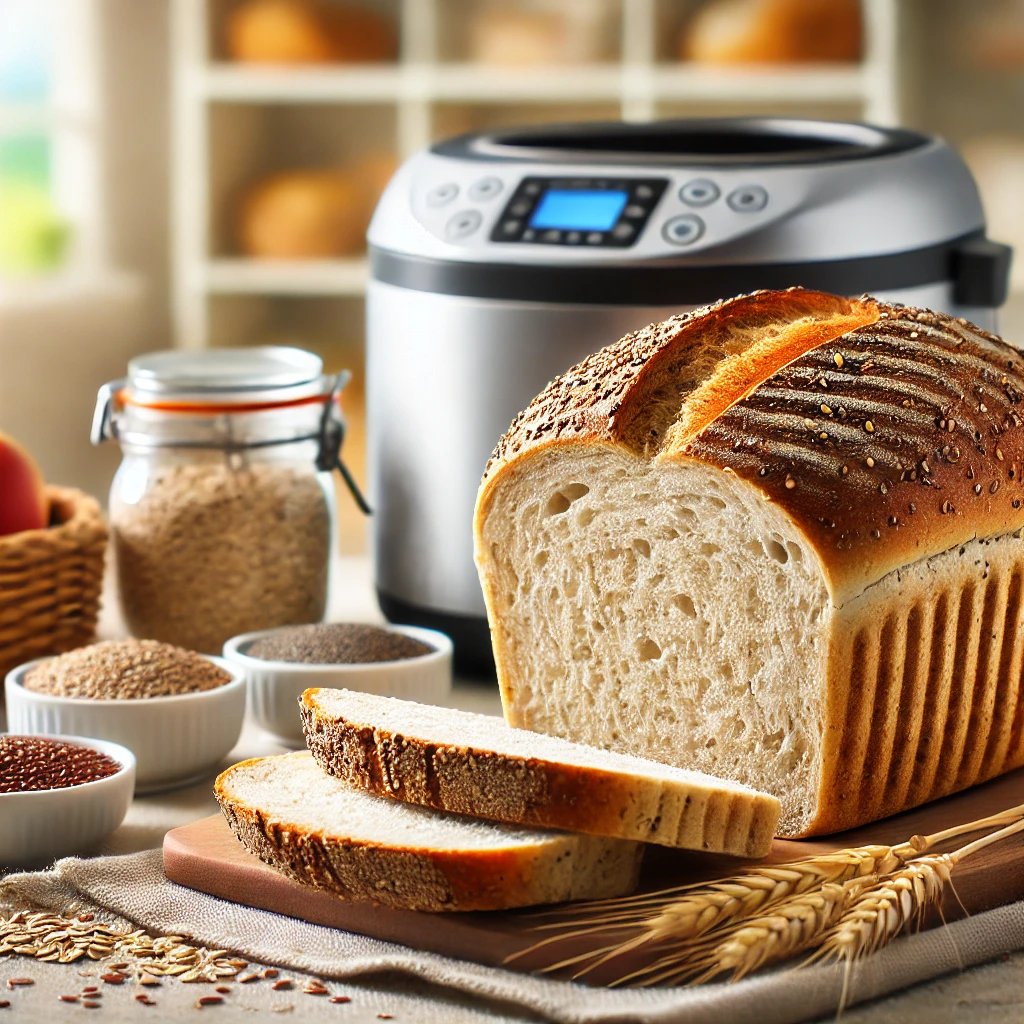Making bread at home has become increasingly popular with the convenience of bread makers. But many wonder, is bread from a bread maker healthy compared to store-bought alternatives? The answer depends on the ingredients you choose and the ability to control every aspect of the process. Bread made at home offers multiple health benefits, such as the absence of preservatives, more whole grains, and reduced sugar. Let’s take a closer look at why bread from a bread maker can be healthier.

What Makes Bread from a Bread Maker Healthier?
A major advantage of making bread at home is the control over ingredients. When you bake your own bread, you can opt for whole grains instead of refined flour, natural sweeteners instead of refined sugar, and healthy fats like olive oil. Unlike many store-bought loaves, homemade bread contains no preservatives or artificial additives, which makes it fresher but with a shorter shelf life. The lack of preservatives makes homemade bread a cleaner and healthier option for you and your family.
Choosing ingredients such as whole wheat flour, nuts, and seeds not only enhances the nutritional profile of your bread but also ensures you get a fiber-rich product. For example, you can follow recipes like the Pumpkin Banana Loaf that incorporate fruit and whole grains, making for a healthier alternative to traditional breads.
Moreover, baking at home lets you control the sodium and fat content, offering a loaf that’s typically lower in salt and unhealthy fats compared to its store-bought counterparts. This reduction in processed ingredients makes bread from a bread maker a better choice for those focusing on healthier eating habits.
The Nutritional Comparison: Bread Maker vs. Store-Bought Bread
When you compare the nutritional aspects of bread from a bread maker to store-bought bread, the differences are striking:
- Calories, Fiber, and Protein: Bread made with whole wheat or multigrain flours has more fiber and protein, making it more filling and nutritious than many white bread options available in stores.
- Preservatives and Additives: Most store-bought breads contain preservatives to extend shelf life. With homemade bread, you avoid unnecessary additives, which can make a significant difference in terms of food quality.
- Sugar Content: Many commercially available breads have added sugars. When baking at home, you can limit or substitute sugar with natural alternatives like honey, reducing the overall sugar content.
For those interested in making nutrient-dense bread, consider recipes that incorporate multigrains or nuts, similar to ideas found in healthy dessert bread recipes, which use healthier ingredients to create both tasty and nutritious loaves.
Healthier Bread Recipe Options for Bread Makers
Baking at home also allows for the creation of various healthy bread recipes that can suit different dietary needs:
1. Whole Wheat Bread
Whole wheat bread is rich in fiber, which supports healthy digestion and helps regulate blood sugar levels. Using a bread maker to prepare whole wheat bread is easy, and the result is a loaf far healthier than many store-bought options.
2. Multigrain Bread
Multigrain bread, made with a variety of grains like oats, barley, and rye, offers diverse nutrients, more fiber, and healthy fats. This bread is a great choice for those looking to boost their fiber intake.
3. Gluten-Free Bread
For individuals with gluten sensitivities, gluten-free bread is a must. Many store-bought gluten-free breads are heavily processed, but homemade gluten-free bread can be fresher and more natural, making it a healthier option.
Is Bread from a Bread Maker Cheaper and Healthier?
Aside from health benefits, making bread at home can also be cost-effective:
- Cost-effectiveness: The upfront investment in a bread maker pays off over time, especially when compared to buying premium whole grain or gluten-free breads. Homemade bread is usually cheaper than purchasing organic or specialty loaves from the store.
- Health benefits vs. cost savings: The health benefits of homemade bread often outweigh the initial cost of the bread maker. You can create a cleaner, healthier product at a fraction of the price.
Common Misconceptions About Bread from a Bread Maker
Myth: Homemade bread is always healthier
While bread from a bread maker can be healthier, it depends on the ingredients used. For example, using refined flour and excessive sugar won’t necessarily produce a healthier loaf. Choose whole grains, natural sweeteners, and minimal fats to make truly nutritious bread.
Myth: Bread maker bread contains more calories
This misconception stems from ingredient choices. In reality, you can control the calorie count of your bread by using fewer calorie-dense ingredients, such as oil and sugar, and opting for whole grains.
The Environmental Impact of Bread Makers vs. Store-Bought Bread
Using a bread maker has environmental benefits, as well:
- Energy efficiency: Bread makers use less energy than traditional ovens, making them a more eco-friendly choice.
- Reducing plastic waste: Baking at home reduces the need for single-use plastic packaging commonly found in store-bought bread. By cutting down on plastic, you contribute to reducing overall waste.
Pros and Cons of Bread Maker Bread
Pros:
- Healthier ingredients and no preservatives.
- Flexibility to customize recipes for dietary preferences.
- Fresher bread with higher nutritional content.
Cons:
- Bread has a shorter shelf life without preservatives.
- Initial cost of purchasing a bread maker.
- Requires preparation and planning.
FAQs: Is Bread from a Bread Maker Healthy?
Is bread made in a bread maker healthier than store-bought?
Yes, bread from a bread maker can be healthier when using whole grains, natural sweeteners, and healthy fats. Store-bought bread often contains preservatives and additives, which are absent in homemade bread.
Can I make gluten-free bread in a bread maker?
Yes, many bread makers have settings for gluten-free bread, allowing you to create healthier gluten-free options at home.
What are the healthiest ingredients to use in bread makers?
Using whole grains, seeds, nuts, and natural sweeteners such as honey or agave is ideal for creating nutritious bread. These ingredients offer more fiber and essential nutrients than processed alternatives.
Is bread maker bread lower in calories?
The calorie content of bread from a bread maker depends on the recipe and ingredients used. By controlling the amount of oil and sugar, you can make low-calorie bread that is both healthy and delicious.
Conclusion
Bread from a bread maker offers numerous health benefits over store-bought varieties. With full control over ingredients, you can eliminate preservatives, reduce sugar, and increase nutritional value by incorporating whole grains, seeds, and nuts. Not only is bread from a bread maker healthier, but it’s also more cost-effective and environmentally friendly. Explore more creative options and try out recipes like Pumpkin Banana Loaf or Healthy Dessert Bread Recipes to take your homemade bread to the next level.
